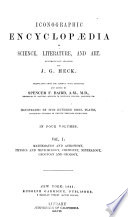 | 1851 - 716 pages
...simple arrangements of which all machinery is compounded. Of these, six are generally distinguished: the lever, the wheel and axle, the pulley, the inclined plane, the wedge, and the screw. All these, however, may strictly be reduced to two — the lever and the inclined... | |
 | T. Baker - Dynamics - 1851 - 160 pages
...change the direction of any force. The mechanical powers are usually considered six in number ; — the Lever, the Wheel and Axle, the Pulley, the Inclined Plane, the Wedge, and the Screw. The first three, when in a state of equilibrium, may be reduced to the lever... | |
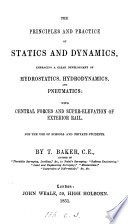 | Thomas Baker (C.E.) - 1851 - 176 pages
...change the direction of any force. The mechanical powers are usually considered six in number ; — the Lever, the Wheel and Axle, the Pulley, the Inclined Plane, the Wedge, and the Screw. The first three, when in a state of equilibrium, may be reduced to the lever... | |
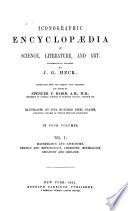 | Johann Georg Heck - Encyclopedias and dictionaries - 1851 - 712 pages
...simple arrangements of which all machinery is compounded. Of these, six are generally distinguished : the lever, the wheel and axle, the pulley, the inclined plane, the wedge, and the screw. All these, however, may strictly be reduced to two — the lever and the inclined... | |
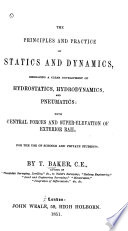 | Thomas Baker - Dynamics - 1851 - 188 pages
...change the direction of any force. The mechanical powers are usually considered six in number ; — the Lever, the Wheel and Axle, the Pulley, the Inclined Plane, the Wedge, and the Screw. The first three, when in a state of equilibrium, may be reduced to the lever... | |
 | Denison Olmsted - Physics - 1851 - 492 pages
...friction? What ftre the methods of diminishing friction ? Specify the comparative amount of friction in the lever, the wheel and axle, the pulley, the inclined plane. the friction evidently exceeds the resistance ; otherwise they would not retain their position. 171. Friction... | |
 | Lorenzo Fairbanks - 1875 - 472 pages
...great force acting through a small space, or vice versa. They are usually considered to be six; namely, the Lever, the Wheel and Axle, the Pulley, the Inclined Plane, the Wedge, and the Screw. But, properly, two of these, comprise the whole, — the Wheel and Axle and the... | |
 | Franz Reuleaux - Technology & Engineering - 1876 - 650 pages
...on this subject. We may give a few specimens of them : — Poppe, Maschinenkunde (1821), p. 81 : — "The lever, the wheel and axle, the pulley, the inclined plane, the wedge, and the screw are included under the name simple machines, simple engines (Ruttzeuge) or mechanical... | |
 | Richard Wormell - Dynamics - 1876 - 282 pages
...simple machines are called mechanical powers. They are usually considered to be six in number; namely, the lever, the wheel and axle, the pulley, the inclined plane, the wedge, and the screw. (i.) A lever is an inflexible rod moveable only about a fixed axis, which is... | |
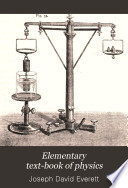 | Joseph David Everett - Physics - 1877 - 344 pages
...applications of the foregoing principles; and we shall begin with the so-called "mechanical powers," namely, the lever, the wheel and axle, the pulley, the inclined plane, the wedge, and the screw. 58. Problems relating to the lever are usually most conveniently solved by taking... | |
| |